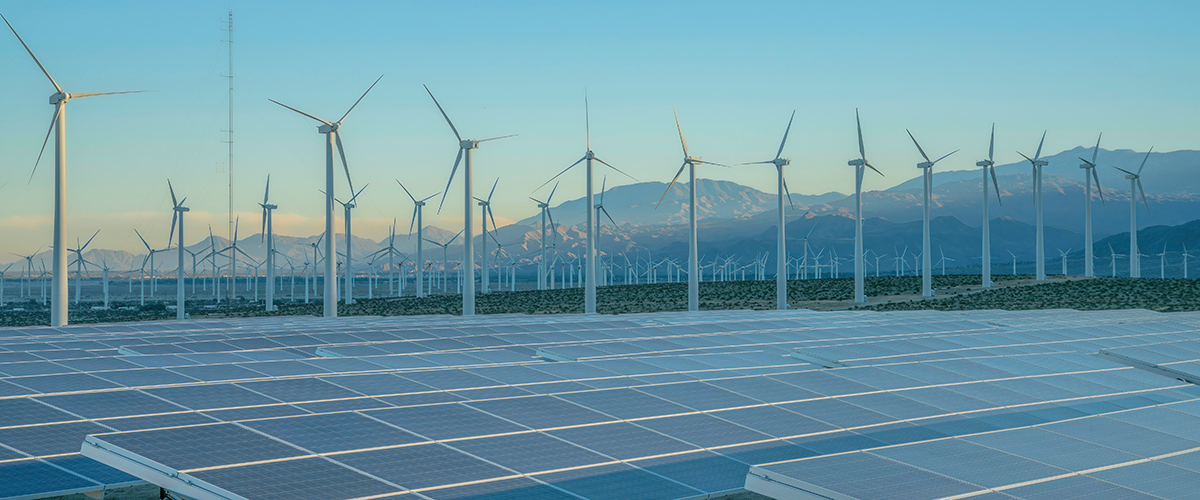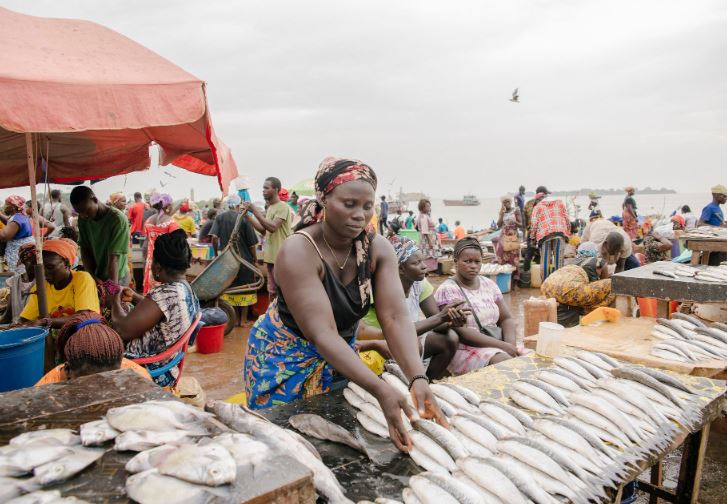Guinea-Bissau has rich natural resources, minerals, fertile land, fisheries, and forests. Its notable minerals include bauxite, phosphates, gold, diamonds, and untapped petroleum.
In 2024, the country began exploring deepwater oil, with Apus Energy drilling an offshore well targeting 314 million barrels.
Agriculture, mainly cashew nuts, drives the economy, making up 90% of exports. Fisheries are essential for food security and jobs. However, political instability and environmental issues slow resource development.
As of 2024, Guinea-Bissau remains one of the world’s poorest countries, with a GDP per capita of about $1,978. Its GDP is projected at $8 billion in PPP terms for 2024 and 2025. Still, the economy is growing, with a recent GDP growth rate of 4.6%.
READ ALSO : Guinea’s Natural Resources: Locations, Discoveries, Viability, Export Potential, And Economic Impact
Guinea-Bissau’s Natural Resources And Their Locations
Here’s a list of all the natural resources in Guinea-Bissau and the areas where you can find them:
| Natural Resources | Locations |
|---|---|
| Bauxite | Eastern regions near the Guinean border, particularly around the town of Boé. |
| Phosphates | Farim in the northwest, near the Cacheu River. |
| Gold | Scattered across regions like Gabú, Bafatá, and Oio. |
| Diamonds | Areas around the Corubal River. |
| Granite | Around the capital Bissau and the town of Gabú. |
| Clay and Limestone | Notably in the coastal plains and central regions. |
| Petroleum (Unexploited) | It is located offshore in the Atlantic Ocean, approximately 100 km from the coast of Bissau. |
| Heavy Sands | Coastal areas, mostly around the Bissagos Archipelago and the coast of the Quinara Region. |
| Timber | Forested regions are in the south (Quinara and Tombali) and east (Bafatá and Gabú). |
| Fish and Shrimp | Coastal waters, including the Bissagos Archipelago and the waters off the coast of Cacheu. |
| Arable Land | Lowland areas along the coastal regions and major rivers like the Geba and Corubal. |
Discoveries Of Guinea-Bissau’s Natural Resources
In the 1950s, Portuguese geologists discovered significant bauxite deposits near Boé in the eastern region. These reserves, estimated at 113 metric tons, contain 44% aluminum oxide.
The deposits span 10 square kilometers, offering a substantial resource for aluminum production. However, extraction is limited due to low global demand and infrastructure challenges.
In 1978, geological surveys in Farim, conducted by the United Nations Development Programme, revealed vast phosphate deposits. Estimates reached 100 million tons of high-quality rock, with an additional 400 million tons of lower-grade material.
By the early 1980s, international studies confirmed a production potential of up to 2 million tons annually, with a phosphate content of 30% P2O5. This is one of Guinea-Bissau’s most notable mineral discoveries.
The 1980s saw increased exploration for precious minerals. Artisanal miners found traces of gold in Gabú and Bafatá, primarily along riverbeds.
Deposits contained around 0.5 grams per cubic meter. Around the same time, geological surveys near the Corubal River uncovered diamond deposits, with preliminary estimates suggesting a total of 100,000 carats.
In the 1990s, extensive studies along the coastline uncovered deposits of heavy sands rich in valuable minerals such as zircon and ilmenite.
These sands, concentrated near the Bissagos Archipelago and Quinara, cover an estimated 50 kilometers of coastline.
Zircon makes up about 10% of the total heavy mineral concentration, while ilmenite accounts for 20%. The discovery was part of a broader effort to assess West Africa’s coastal mineral potential.
The early 2000s was a new phase of exploration with seismic surveys off the Atlantic coast. These surveys discovered promising offshore oil reserves in deepwater blocks about 100 kilometers from Bissau.
Estimated reserves reach 314 million barrels, with potential for further discoveries in adjacent blocks. While extraction is a long-term goal, the discovery has attracted international interest and positioned Guinea-Bissau as a potential oil producer.
The most recent discovery was in late 2024 with the high-quality graphite deposits in Tombali, southern Guinea-Bissau.
Graphite is essential for battery production and renewable energy technologies. Preliminary studies estimate reserves at 500,000 tons with a purity level of 95%.
Viability Of Exploiting Guinea-Bissau’s Natural Resources
Guinea-Bissau’s poor infrastructure makes resource extraction difficult. The country has only 2,450 kilometers of roads, with less than 10% paved. Weak transport and energy systems slow down development.
Though some improvements have been made, major gaps remain. Also, frequent coups and unstable leadership scare off investors. The 2020 coup attempt showed ongoing political risks.
Without stability, long-term projects like mining and oil drilling are still uncertain. Deforestation, overfishing, and mining threaten Guinea-Bissau’s environment. The Bissagos Archipelago, a UNESCO Biosphere Reserve, is at risk due to harmful fishing practices.
Then again, the lack of modern mining technology slows resource development. However, partnerships with international companies are helping improve extraction techniques, especially for offshore oil drilling.
Export Potential Of Guinea-Bissau’s Natural Resources
| Major Resources | Export Value | Primary Market |
|---|---|---|
| Cashew Nuts | $76.8M | India ($72.3M) |
| Fish Oil | $13.5M | Chile ($10M) |
| Non-fillet Frozen Fish | $13.3M | Ghana ($4.73M) |
| Processed Crustaceans | $1.61M | Côte d’Ivoire ($5.88M) |
| Timber | Small-scale | Netherlands ($2.8M) |
Guinea-Bissau’s economy relies on agricultural exports, especially cashew nuts. In 2024, cashew exports reached over $76.8 million, accounting for over 70% of total exports. India dominates as the primary buyer, importing $72.3 million worth annually.
Fish products also contribute significantly. Fish oil exports brought in $13.5 million, while non-fillet frozen fish generated $13.3 million, with key markets in Chile and Ghana. Timber exports are still small but are expanding.
Emerging Export Opportunities
Untapped resources could transform Guinea-Bissau’s economy. Bauxite reserves in Boé contain 44% aluminum oxide, with 113 metric tons discovered. Infrastructure challenges have delayed exports, but the potential is there.
Farim’s phosphate reserves are another major opportunity. With an estimated 100 million tons of high-quality phosphate rock, the site could produce up to 2 million tons annually.
Offshore oil exploration is also gaining popularity. Drilling efforts are ongoing, with prospects for commercial production in the coming years.
Graphite is a recent discovery in Tombali. Found in 2024, these high-quality deposits could meet the rising demand for battery production and renewable energy technologies.
These resources align with the global demand for aluminum, fertilizers, and green energy components. Guinea-Bissau’s natural resources match global market needs.
Cashew nuts are a key commodity, with India as the leading buyer due to high domestic consumption. Graphite demand is surging as the world changes toward renewable energy and electric vehicles. Battery production relies on this mineral, making Guinea-Bissau’s deposits valuable.
Phosphate rock is in high demand as global fertilizer needs increase. Farim’s reserves position the country as a potential supplier.
Despite its resource wealth, Guinea-Bissau faces several hurdles. Infrastructure is a major obstacle. As we’ve said, only 10% of the roads are paved, and port facilities are limited. These issues complicate transportation and logistics.
Limited processing capacity is another drawback. Most raw materials are exported without value-added processing, which can reduce profitability.
READ ALSO: Benin’s Natural Resources: Locations, Discoveries, Viability, Export Potential, And Economic Impact
Economic Impact Of Guinea-Bissau’s Natural Resources
But how have these resources impacted the country’s economy?
| Key Resources | GDP Contribution | Export Revenue | Empolyment Share |
|---|---|---|---|
| Cashew Nuts | 25% | $76.8M | 80% (agriculture) |
| Fisheries | 10% | $13.5M | 15% |
| Timber | Small-scale | Small-scale | N/A |
Contribution Of Natural Resources To GDP
Agriculture, led by cashew production, is the backbone of Guinea-Bissau’s economy. Cashews make up 25% of GDP and 90-98% of exports. In 2023, raw cashew exports generated $76.8 million.
Fisheries add another 10% to GDP, with fish oil and non-fillet frozen fish as key exports. Mineral resources like bauxite and phosphates are still untapped but could boost GDP once infrastructure improves.
Employment Rate
The country’s natural resources provide jobs for most of the population. Agriculture employs 80% of the people, mainly smallholder farmers relying on cashew cultivation.
Fishing sustains coastal communities, while artisanal mining supports regions like Gabú and Bafatá. But these jobs are low-paying due to outdated methods and low investment.
Export Revenue From Natural Resources
Exports drive Guinea-Bissau’s economy. Cashew nuts dominate, with India as the top buyer. In 2023, fish products brought in $13.5 million.
Timber exports are small but growing. New resources like bauxite (113 metric tons) and offshore oil (314 million barrels).

